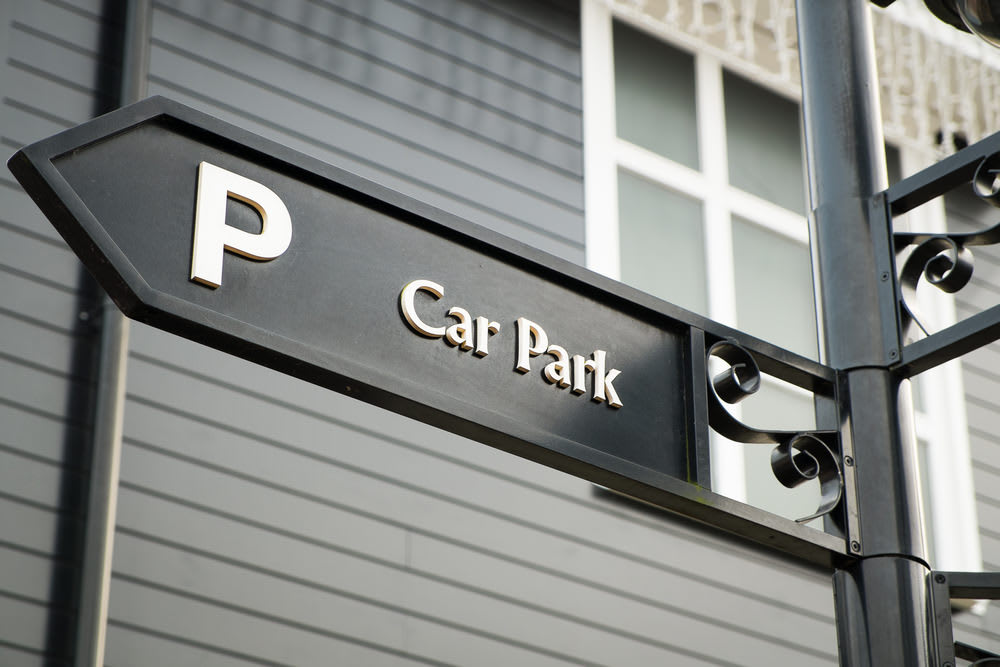

Parking is an important part of owning and driving a car. After all, when you’ve enjoyed the luxury of being conveyed swiftly and comfortably to a destination you could never reach on foot, you still need to leave the car somewhere.
Most parking spots in the cities of the USA are either stalls perpendicular to the road, parking lot, or garage ramp; or they are angled slots at the side of the road.
Angled Slots: are pretty easy to use. You simply drive slowly into the angled stalls, leaving enough space at each side for getting in and out of the car, and hopefully enough to avoid the deadly door dings that are so common in these situations.
Perpendicular Slots: require more of a turn to get into, but they offer the option of backing in, so that leaving is made a little easier when you return from your errand or date, alleviating that moment of trepidation when you back out, blind, into the roadway. The thing is, backing in requires some skill. But like parallel parking (which we’ll discuss next), practice is everything.
If you want to look like a pro valet parker (and everyone does), try practicing in an empty lot with cones (or cardboard boxes if you don’t have cones). Place the boxes or cones as if they were parked cars next to an empty slot, then drive past them, stop, select reverse, and swing in.
You’ll need to monitor the mirrors and the rearward view, and many people find it more comfortable to bring their right arms up onto the seatback alongside them (removing the seatbelt, if necessary) so that they can comfortably turn their heads to look back. It can be hard on the neck.
- Parallel Parking: is another whole deal; probably the most stressful part of any one's driving test, right? Here again, practice makes perfect. We know of people accustomed only to the parallel parking situation in other countries, where they became skillful enough to put a car into a space little longer than the car itself. Then they move to the States, get used to the ubiquitous nose-in stalls we’ve all come to know and love, and find themselves unable to parallel park anymore. You know who you are!
But the process is comparatively simple. In some places, just finding a spot is the hardest part of the job. Having found one, you should draw alongside to check that it’s big enough to fit your car. Your judgment on that score improves with practice, so just pick visibly big spaces to start with. It’s important that you put on your turn signal to show other road users that you’re planning to park.
Once you’re next to your selected spot, move forward until directly alongside the car ahead, with about three feet between you. Check your mirrors to make sure there are no cars coming, because the front of your car will swing a little way into the road once you start turning.
Then back up a little until your car’s rear tires are alongside that car’s rear bumper. Turn the steering all the way right (assuming you’re parking on the right side of the street), and back slowly into the space. When the right front corner of the car behind you appears dead center in your rear window, stop. Straighten the steering wheel and move slowly backwards until the front of your car barely clears the back of the one in front, and then stop again.
Now turn the steering all the way to the left, then move slowly backwards as the nose swings into the space. When the car is parallel to the curb, stop. Then straighten the wheel and move slowly forward until you’re in the center of the space. If you find yourself a little too far from the curb, you can back and fill a few times to wiggle a little closer. If your rear tire hits the curb on the way in, you’ll have to extricate yourself and do it over. Once you’ve parked to your satisfaction, set the parking brake.
If you’re parked on a steep hill, it’s advisable to follow a couple of rules to prevent possible runaway situations. When parked uphill, turn the steering so that the front wheels are pointed away from the curb. If the brakes somehow fail, the car will just back up until the front wheels are chocked by the curb.
Similarly, when parked on a steep downhill street, turn the steering so that the front wheels turn into the curb. If the brakes let go, the car runs up against the curb and goes no further.
It’s advisable to set the parking brake, even on vehicles with automatic transmissions — all of which offer a Park position that wedges a parking pawl in a special notched wheel on the transmission’s output shaft (holding a vehicle only on the pawl subjects the transmission components to a lot of stress). And with all that torque on the pawl and gearwheel, you can get a nasty clunk when you start up and engage drive.
Following these tips will help ensure a safe and successful parking job every time – whether you're in an angled slot, perpendicular slot, or parallel parked.



